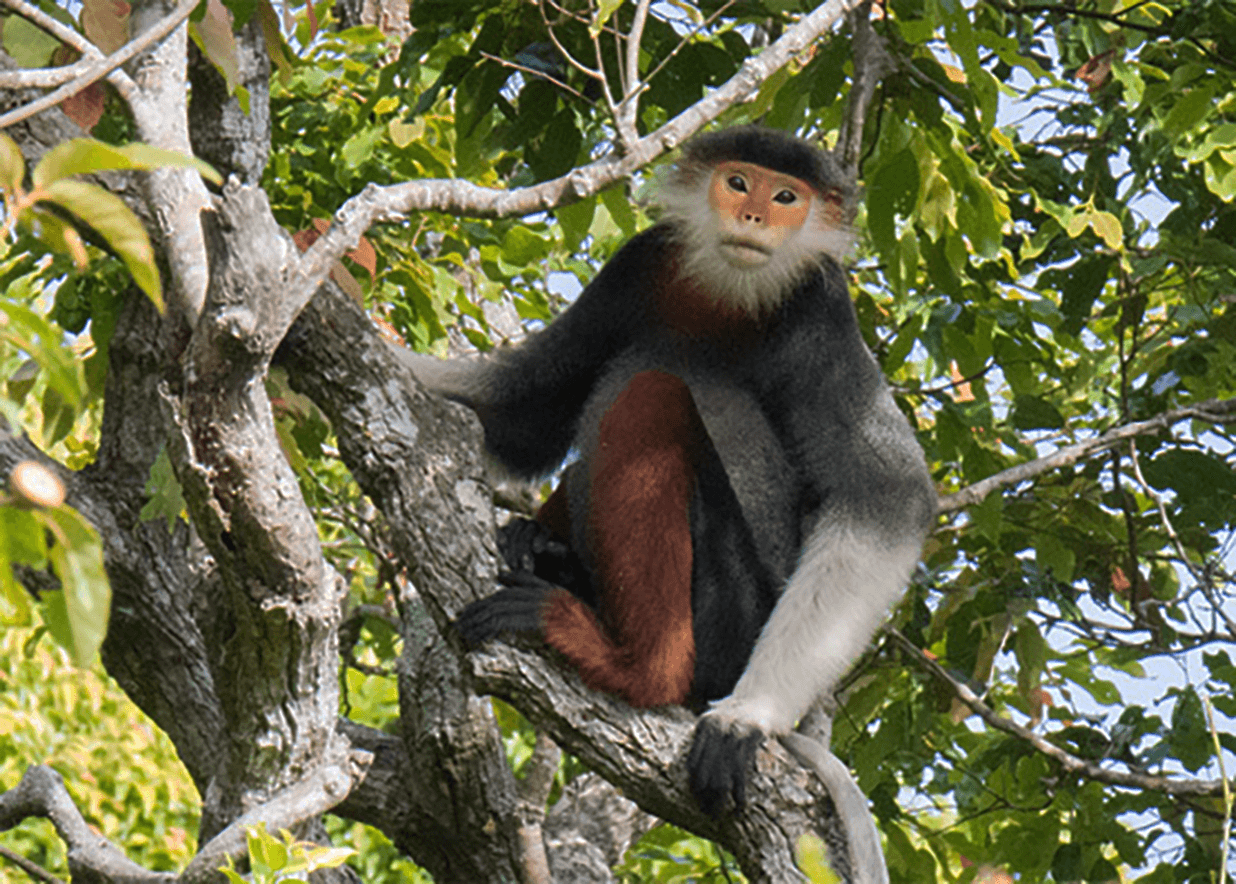
More than half of Laos is covered by forests that contain a large variety of trees and a rich biodiversity, which is crucial for the sustenance of local communities. But these forests must be protected if their valuable resources are to be sustained.
The government, international organisations and other entities recognise the importance of Laos’ forests and have established many projects to protect them.
Nakai Nam Theun National Park is one of the largest remaining contiguous forest blocks in the Indochinese peninsula and is home to numerous rare, endemic and highly threatened species.
The park was ranked as an area of great importance for national and global biodiversity in 2001. In 2008 it was declared to be one of the richest regions of Southeast Asia in terms of biodiversity and endemism, and in 2012 was identified as a ‘key biodiversity area’ within the Indo-Burma biodiversity hotspot.
At the recent 17th Nakai Nam Theun National Park Committee meeting chaired by the Minister of Agriculture and Forestry Dr Lien Thikeo, the park was approved to apply to the global Green List programme of the International Union for the Conservation of Nature (IUCN).
The IUCN Green List is an international standard for certification that recognises and improves successful area-based nature conservation efforts.
The Executive Director of Nakai Nam Theun National Park, Mr Savanh Chanthakoumane, said the Lao government’s approval to proceed with the IUCN Green List certification of the park was a big step towards their objective to have the national park obtain international recognition status.
“Aside from the inherent benefits coming from certification, this process can also serve as a standard and reference for other protected areas in the Lao PDR,” he said.
Head of IUCN’s Indo-Burma Group, Jake Brunner, said the list is a new IUCN standard that recognises and rewards good protected area management.
This is done in close collaboration with protected area managers and other stakeholders and is a major capacity development opportunity. “We look forward to working with Nakai-Nam Theun National Park on getting the national park added to the global Green List,” he said.
Mr Savanh said that at the meeting the committee discussed many issues regarding forestry and biodiversity protection in the area with a focus on the development of living standards among local
people. They also discussed ways to resolve societal problems impacting forestry, forest land and forest resources in Nakai-Nam Theun National Park.
“Our target is to put into practice a model of conservation that interweaves with the development of local communities and will guide sustainable development and green growth,” he said.
The meeting also discussed the involvement of local people with the administration, protection, development and the use of forestry, forest land and forest resources in the park. The committee wishes to be informed of the problems, causes of and reasons for all the issues involved before assigning various government bodies to address them.
It was noted that the benefits of Green List certification would include regional and international recognition, as Nakai-Nam Theun National Park would join a community of protected areas that demonstrate conservation leadership through commitment and action.
Certification also brings technical support from the IUCN to strengthen park management and governance, and increase funding support.
These benefits will make the park a source of inspiration for conservation efforts in Laos and set a precedent for the 24 other protected areas.
Nakai-Nam Theun National Park spans 4,270 km2 across Khammuan and Borikhamxay provinces in central Laos. It was designated a national park on February 15, 2019, under a prime ministerial decree.
Mr Savanh said the addition of the park to the Green List would add it to the world’s natural heritage and was a significant starting step for forestry protection in Laos.
“This will be a leading model for Laos and the region and will bring us in line with international standards in natural resource protection. We may be able to say that Nakai-Nam Theun National Park is the first area of Southeast Asia to be IUCN Green List certified in the world,” he added.
This was a golden opportunity for park managers to get technical support domestically, regionally and internationally, from experts from world conservation bodies and other groups involved in environmental and social protection, he said.
Laos’ 20 National Protected Areas cover 14 percent of the country’s terrain. Dong Natad and Dong Phou Vieng National Protected Areas are located in Savannakhet province, while Phou Khao Khuay National Protected Area is in Vientiane. Nam Ha National Protected Area is in Luang Namtha province and Phou Daen Din National Protected Area is in Phongsaly. Phou Hin Poun National Protected Area is in Khammuan province and Xe Pian National Protected Area is in Champassak province.
These areas contain some of the country’s rarest and most diverse plants and animals. Many of them offer the best environments for adventure activities such as trekking, rafting and camping.
News: Vientiane time


